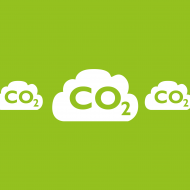DEV32 - Delivering low carbon development
The Plymouth and South West Devon Joint Local Plan has now been adopted! To find out more please visit the Plymouth and South West Devon Joint Local Plan: Adoption page.
Visit the interactive Plymouth Plan to see other policies that affect decision making across Plymouth City including the Council and its partners.
The need to deliver a low carbon future for Plymouth and South West Devon should be considered in the design and implementation of all developments, in support of a Plan Area target to halve 2005 levels of carbon emissions by 2034& and to increase the use and production of decentralised energy. The following provisions apply:
- Developments should identify opportunities to minimise the use of natural resources in the development over its lifetime, such as water, minerals and consumable products, by reuse or recycling of materials in construction, and by making best use of existing buildings and infrastructure.
- Major development should take account of projected changes in temperature, rainfall, wind and sea level in its design with the aim of mitigating and remaining resilient to the effects of changing climate.
- Development proposals will be considered in relation to the ‘energy hierarchy’ set out below:
- Reducing the energy load of the development.
- Maximising the energy efficiency of fabric.
- Delivering on-site low carbon or renewable energy systems.
- Delivering carbon reductions through off-site measures.
- Developments should reduce the energy load of the development by good layout, orientation and design to maximise natural heating, cooling and lighting, and reduce the heat loss area. For major developments, a solar master plan should show how access to natural light has been optimised in the development, aiming to achieve a minimum daylight standard of 27 per cent Vertical Sky Component and 10 per cent Winter Probable Sunlight Hours.
- All major development proposals should incorporate low carbon or renewable energy generation to achieve regulated carbon emissions levels of 20 per cent less than that required to comply with Building Regulations Part L.
- Developments will be required to connect to existing district energy networks in the locality or, where there is a future network planned, to be designed to be capable of connection to that network. Where appropriate, proportionate contributions will be sought to enable a network to be established or completed.


